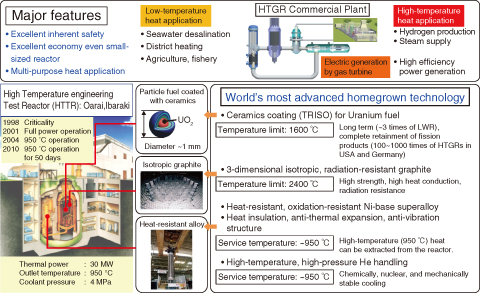
Fig.6-1 Outline of HTGR; Features, Heat utilization, Major specifications, and HTTR technologies
HTGRs are helium gas-cooled, graphite-moderated thermal neutron reactors capable of meeting various heat application requirements, such as hydrogen production and power generation. In particular, they are strongly expected to regain the public’s trust in nuclear power because of their inherent safety.
To reduce greenhouse gas emissions and remedy the fragility of Japan’s energy supply-demand structure arising from excessive dependence on fossil fuel resources from abroad, nuclear energy should be used not only for power generation but also various heat applications. The Strategic Energy Plan, Large-boned Policy, and Japan Revitalization Strategy, decided by the cabinet in 2014, indicated the promotion of research and development of a high temperature gas-cooled reactor (HTGR) as a national policy because of the reactor’s excellent inherent safety and ability to meet energy demands from various industries.
An HTGR can supply temperatures of 950 ℃ using inert helium (He) gas as a coolant. Three other cutting-edge Japanese technologies that make it feasible to obtain such high temperatures in an HTGR have been developed by JAEA. The first is a technology for fabricating ceramic-coated fuel particles with a diameter of approximately 1 mm. Ceramics remain stable even at 2500 ℃ and provide superior heat-resistant coating layers for containing radioactive fission products within fuel particles. The second is a technology for fabricating isotropic and radiation-resistant graphite blocks. The third is a technology for manufacturing heat- and oxidation-resistant super-alloys with careful composition of alloy contents. With these major technologies as well as further knowledge of high temperature structural design and the like, we generated a temperature of 950 ℃ in the high temperature engineering test reactor (HTTR) for the first time in the world in 2004, and maintained this temperature over 50 days of operation in 2010 (Fig.6-1).
It is feasible to prevent explosive gas generation by physical phenomena, as well as accidental overheating and oxidation of the fuel coating layers, without any engineered safety features. The inherent safety features assure no harmful release of radionuclides to general public and environment in any accident.
The heat from HTGR is useful for not only power generation but also hydrogen production for fuel cell cars and direct reduction iron-making, and for supplying steam to industries. Waste heat can be utilized for desalination, among other applications. Research and development of the thermochemical IS process for producing hydrogen by splitting water molecules has been conducted. A continuous hydrogen production test is underway to establish the applicability of this technology to industrial plants, with the test facility consisting of components made of existing steel and ceramic materials.
For practical applications of HTGR, we intend to perform integration tests of HTTR and heat application systems for power generation and hydrogen production, and research such Topics as advanced safety (Topics 6-1, 6-2, 6-3, 6-4).